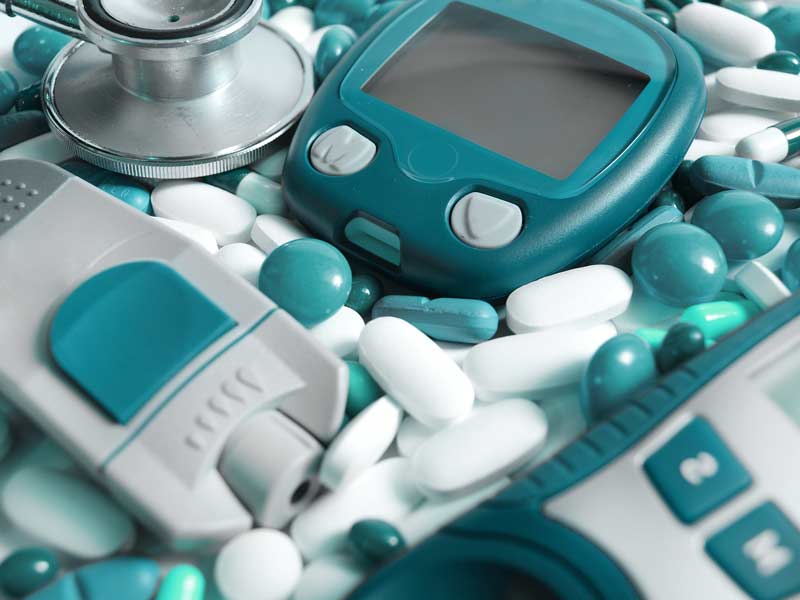10 Tips on Medical Device Industry Web Design

If you’re in the medical device industry, you’re already aware of how important the work you do is.
There are thousands of doctors, nurses, EMTs, caregivers, and patients relying on your products, day in and day out. These individuals, more often than not, are using your website to connect with the information they need most.
Does your website serve them in the best way possible? Are you sure? Check out this list of the top ten things your website should have if you are in the medical device industry and compare it to your current site. If you’re missing anything, there’s no better time than now to improve your site, and, in turn, your search rankings, customer relations, and bottom line.
A homepage and navigation that’s easy to follow
The medical device industry frequently has more rules to follow and information to cover than comparative B2B industry pages. Because of this, it can be easy to fall into the trap of over-saturated and complex site navigation. Fight that urge. A recent small business survey had 94% of respondents stating that easy navigation is the most useful website feature. If you can visit two different sites that offer similar products, you’re not going to choose the one where you struggle to find the information you’re looking for. As for the homepage, use the banner or area “above the fold” to clearly, concisely convey your positioning — what your product does and its benefits/differentiators. Confused visitors don’t stick around to learn more.
Separate sections for practitioners and patients
Practitioners and patients have different questions, concerns, and interests regarding the medical devices you are marketing. Make sure that your site contains spaces that are dedicated to both. This will make navigation easier for everyone and lead to less confusion or misdirected inquiries.
Clear calls-to-action
You know what calls-to-action are. They’re statements that direct visitors to your website toward actions you want them to take. It can be to contact you directly, fill out a form, download a white paper, or something else entirely. Whatever your main goals are with your medical marketing plan, you need to make sure you’re communicating directly with visitors so they know what you want them to do.
High quality and Informative imagery
Medical websites and medical marketing can be less than stellar when it comes to visual content. Showing injections, surgeries, or anything more than informative product photos, especially when intended for patients, requires a keen attention to the quality and content of your imagery. Stick to product photos, illustrations and original content that conveys an informative and positive tone. Because you’re in the medical device industry, quality and reliability is the cornerstone of your business – make sure the images on your site show that, while clearly conveying product specifications and features. .
Search engine optimized copy
According to Search Engine Journal, 93% of online experiences begin with help from a search engine. If your target audiences are looking for the services you provide, are you making the efforts to make sure they find you? That said, there are tons of different things you can do to improve your medical device website’s search engine rankings. Start with keyword research to determine what types of searches are most likely to lead prospects to your site. Take that data to develop a plan that covers the topics and types of content most likely to improve your rankings.
An FAQ page
An FAQ page, or Frequently Asked Questions page, is a hub on your website that will help your visitors find answers to all of the most common questions they’re visiting your site to answer. Keeping the answers to their questions in one place makes life easier for those visiting your site and for you. They find what they’re looking for, and if not, are directed to an easy way to contact you. You, on the other hand, will waste fewer resources answering repeat inquiries. Your sales team can likely generate a quick list of questions they answer frequently, and mine their emails for already-written answers.
Value-added content
At its core, content that’s value-added is anything that’s unique or exclusive to your site. Do research to find industry topics competitors aren’t talking about and fill those gaps yourself in a blog or resource section. Your site should also include clinical evidence and case studies, how-to videos, whitepapers, and easily downloadable brochures, in addition to clear, informative and detailed product information.
Repeated benefit statements
The medical device products you create and offer are high quality, one-of-a-kind, and, in many cases, life saving. Don’t feel bad about doubling down on your benefit statements, reminding prospects of the greater impact of what you offer. Benefit statements can easily be woven into content like blog posts, social media, and beyond in a way that’s direct without feeling obnoxious. The message may likely be different for practitioners, patients, and other decision-makers.
Responsive, mobile-friendly design
At least 70% of average web traffic happens on mobile devices. Long story short: if your website hasn’t been designed to be intuitive and responsive on mobile devices, you’re going to be behind your competitors. You want your website to be as reliable as your devices are: ready to help and be successfully used no matter when, where, or why.
24-hour customer support
This one is pretty self-explanatory. You offer complex medical device products to an industry that works day and night. Make sure you can support your clients easily with accessible chat portals. Anything that makes sure they can get what they need from you when they need it… quickly.


